What is a SWOT analysis and how to do it?
A vital part of the marketing planning process is performing a SWOT analysis of your company, product or service. Without a complete SWOT analysis, you will find it difficult to develop a marketing strategy. Performing a SWOT analysis is also helpful as part of a brainstorming session. It can help give you the solutions for dealing with a particular problem within your company, coming up with product improvements or simply checking your company is on the right track during annual planning sessions.
SWOT stands for –
- Strengths
- Weaknesses
- Opportunities
- Threats
The aim is to perform an honest and complete review of your company and/or product or service and pull out the best and worst bits, as well as making predictions for what’s to come.
Step 1 – Identify your strengths
Ask yourself the question – What are we good at and why?
I am often surprised by how difficult some people find it to list the key strengths of their business. It’s vital to know why someone should choose you and buy your product and these reasons must be front of mind. By listing them this really helps to differentiate yourself from your competition and also create sales messaging.
Try to be specific with these strengths and drill down into the detail. Each strength can become a social media post, or a bullet point in a sales brochure and can give your sales team information and selling points to use to close a sale, so try and list as many as you possibly can.
As well as asking yourselves and your team, ask your customers if you can. Invite their feedback on social media or via a survey. Make it attractive by offering a discount or a prize for their views. Customers sometimes pull out things that you’d never thought was a selling point, so their feedback is valuable during this process.
Step 2 – Expose your weaknesses
Businesses don’t normally like to dwell on what they aren’t good at, but this step is vital. By being honest and transparent about your weaknesses, you can go about solving these issues and improving your company, your products and your customer service. You can also market around those problems and acknowledge them. Some of the most iconic advertising shines a light on the negative perceptions people have of the product or brand and addresses them head on to become selling points.
In 1962 Avis launched an advertising campaign which stunned the market by acknowledging the fact that they trailed their main rival Hertz by some way. They used this well-known fact and turned it on its head from the negative that they weren’t as big as Hertz by using the slogan “When you’re only No. 2, you try harder”.
Stella Artois knew that they were more expensive than their competitors, but rather than try and compete on price, they instead launched the slogan “reassuringly expensive” to associate cost with quality and position itself as a luxury brand.
When we’ve created marketing plans for businesses on the Costa del Sol, we take more time looking at the negative than the positives and working with them to find solutions.
No parking – speak to your local car park and arrange free parking for a certain spend
Expensive – stress quality, service, luxury
Niche – target into your ideal client and why it’s perfect for them
Unknown brand or one with a difficult foreign name – time for a launch to show just why it’s a positive to have it here in Spain and radio ads to help with pronunciation
No physical location – work hard on developing a strong online presence and offer options such as telephone support and think about developing a sales team or get out there and network so you have visibility without a premises
Neighbours complaining – launch a local resident outreach scheme, where you give them the opportunity to have their say and try your best to minimise inconvenience. Then introduce benefits for local residents e.g. discounts, exclusive events and freebies to make them know you care.
Try and get customers to give their honest feedback of where you’ve fell short, or what they don’t like and then show them how you are improving. Being a company that listens and responds goes a long way to repair relationships and get new clients in.
Respond to negative reviews or comments in an open and honest way as well. Try and take these criticisms as useful feedback which allows you to grow and improve, rather than getting angry. Reply with your thanks, and explain how you’re dealing with their feedback.
Step 3 – What opportunities are out there for your business?
This is a chance to think about external factors and what could be out there to improve sales, or give a competitive advantage in some way. For example, is there a customer segment that hasn’t really been marketed to before, or a different way to use the product which could expand your customer profile. Is there a new trend or a coming change which could be linked to your company, brand or product that you should be planning to take advantage of. In the case of the Costa del Sol, are there more people of a particular nationality arriving or starting to show interest in the area who you’re seeing as good potential customers? How could you reach them?
Speak to your sales team and review your analytics to see who’s buying, who’s responding, what’s popular, what’s not. Try and explore the gaps or the innovative ways of using your products and then try to market to fill these gaps and encourage new users and customers.
Step 4 – Are there any threats coming your way that need to be planned for?
Don’t stick your head in the sand! You need to look ahead to potential threats so you can plan to deal with them. These are external factors, so could be changes of legislation in the pipeline, cost increases, new competitors entering the market, labour shortages etc. Knowledge is definitely power when it comes to business, so looking at the worst-case scenario and be ready to respond if and when it does happen, allows you to become more flexible and respond quicker, getting ahead of your competitors and having a clear plan in mind.
What to do with your completed SWOT analysis?
Once you have your SWOT analysis completed, either part of a marketing plan, or a brainstorming session, you need to use this to shape a strategy.
Start by checking that the strengths that you’ve identified are being brought out by your marketing and consider developing marketing materials to highlight them really clearly.
Suggestions
- An ad or leaflet that directly answers the question – why should you use us is surprisingly powerful.
- Write a social media post per strength and schedule one per month
- Create a new website page or blog post, or integrate these strengths into your company About Us page or product descriptions
- Use customer testimonials to pull out these strengths in real world examples
Remember – don’t be afraid to shout about what you’re good at!
Then use your weaknesses as a basis to find solutions for these issues and start to promote them as benefits. For example – free parking for customers!
If you’ve identified a real issue and are taking steps to address it, don’t be afraid to acknowledge it. Customers and potential customers appreciate honesty and like companies who listen and try and fix mistakes, so don’t hide these things. They can actually be good PR.
Next, put a plan together for exploiting the opportunities you’ve identified. This could be a new marketing campaign to a different country or potential client segment, or a promotion to get rid of old stock, or appeal to a different demographic. It could also be demonstrations of different ways to use your product, or sharing new data to show the importance of your service.
Last but not least, do some crisis planning and preparation to make sure you’re ready to deal with threats that you’ve identified might be coming your way. Forewarned is definitely forearmed and there’s no harm having a plan in place, even for something that may never happen.
Need help?
Our experienced marketing professionals can lead your team in a brainstorming session which includes a SWOT analysis, or create a detailed marketing plan including a SWOT analysis. We also offer marketing planning training sessions to help you to understand the process and how to do a SWOT analysis, so you can use this tool in the future. Please contact us to discuss how we can help you improve your marketing on the Costa del Sol.


